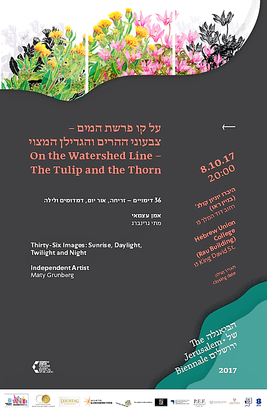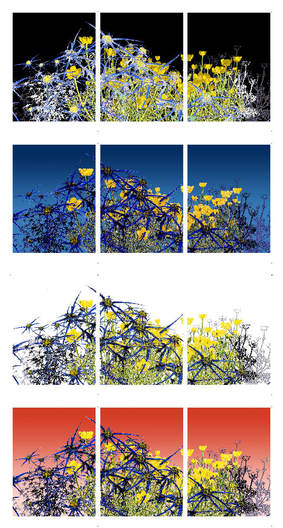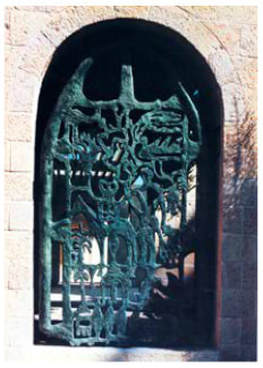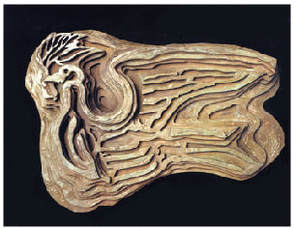
26 Exhibitions took part in Jerusalem Biennale of Art 2017 (http://www.jerusalembiennale.org/biennale2017-1/).
Among them, Maty Grunberg's Exhibition – "On the Watershed Line – The Tulip and the Thorn", http://www.jerusalembiennale.org/exhibitions2017/#/new-gallery-38/
The exhibition was curated by Yivsam Azgad, curator and head of department of Media and Relation of Weizmann Institute of Science, where the exhibition was hosted during the last years in the department of Plant & Environmental Science.
Now, the exhibition changed place to HUC - Hebrew Union College in Jerusalem, as part of Jerusalem Biennale of Art, 2017, and will stay there for the time .
About the Project:
Thirty-Six Images: Sunrise, Daylight, Twilight and Night
The wild plants commonly found in Jerusalem and the surrounding area serve as the inspiration for this work of the artist, Maty Grunberg.
Jerusalem and its surrounding environs are home to a varied population of many wild plants: from the charming and delicate Jerusalem tulip to the thorny and threateningly strong thistle. For thousands of years, plants scattered here from Central Asia, Asia Minor, Africa, Southern Europe and from the shores of the Mediterranean islands. Each one of them adapted to the habitat in the Jerusalem hills - from the blazing and sunburned summer to freezing winter nights; from rainy season to drought; and from the incomparably wonderful days of the Jerusalem autumn and Israeli spring.
The work depicts a series of the wild plants' meetings between two cultures, between abundance and shortage, between softness and obstinacy. These encounters occasionally seem like hesitant initial contacts stemming from curiosity, sometimes like a type of peace negotiation or attempt to establish coexistence, and at others, as a never-ending struggle between the survivors.
Jerusalem is a city that lies on the borderline – not just the political border, but also the border between the temperate north with its chill and snow and the hot south, the desert and the Negev. A border that marks an ecological boundary, a watershed line that distinguishes between the western hills, the freshness of their winter rains, and the wide expanse of wilderness east of the city that descends to the arid, dry shores of the lowest place on earth – the Dead Sea. It is this uniqueness that attracts and enables the existence of so many and such a rich variety of plants. More than one thousand species succeed in taking root, growing, flowering, bearing fruit and surviving here.
Jerusalem's plant population, the like of which exists in only a few other places in the world, thrives despite, and perhaps because of, more than three thousand years of human history, fire and flood, and the cattle, sheep and goats that ate these plants. A fitting metaphor indeed for the history of the people who lived, and still live, in this unique landscape.
Link to short video describing the work "The Tulip & the Thorn"
https://youtu.be/6yKjL1ibFhE
Hebrew Union College, Rau Building, , 13 King David St. Jerusalem
Hebrew Union College - http://huc.edu/
written by Naomi R. Azar, M.G. Studio Manager




